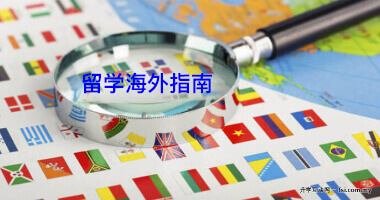Two teams from the Faculty of Engineering and Green Technology (FEGT) excelled at the 8th International Biotechnology Competition and Exhibition (IBCEx) 2022 organised by the Bioprocess Engineering Student Society (BIOSS) from the School of Chemical and Energy Engineering, Universiti Teknologi Malaysia. The event was held from 15 to 16 April 2022.
Themed Greening the World, Innovate the Future, the annual competition was an exhibition of innovation or new discovery projects. The competition served as a platform for youth to learn and share their skills and knowledge toward achieving a more sustainable development through research and development activities in science and technology.
The team who won the silver award was Bachelor of Engineering (Honours) Petrochemical Engineering student Lim Khar Lok, with supervisor ChM Ts Dr Sin Jin Chung. Their research was titled An Innovative Green Process for the Depollution of Organic Pollutants-contaminated Household Greywater through Sunlight Photocatalysis.
Lim expressed, “I feel very happy and proud for participating and winning a silver medal in the IBCEx22 on behalf of UTAR. I would like to express my greatest gratitude to my supervisor Dr Sin Jin Chung for guiding me throughout this competition. I believe I had expressed and conveyed my selling points and market potential of the product effectively, especially on its novelty and environmentally friendly feature, which convinced the judges. Therefore, I am very thankful for the opportunity to participate in the competition because it gave me a platform and made a way for academic sharing and knowledge exchange with other local and international competitors. Thanks to it, I learned something new from the competition to further develop and improve the current research project.”
When asked about his inspiration for the research, he explained, “Dye contaminants with potential toxicity, mutagenicity and carcinogenicity can be found in the greywater due to the leaching of dyes from household sources such as fabrics, foods and personal care products, which weakens the social acceptance of greywater recycling and reuse schemes. Moreover, the disposal of untreated greywater into water bodies poses insidious threats to the environment and ecosystem owing to the various hazardous contaminants existing in greywater especially synthetic dyes which could affect the water quality parameters. Therefore, a green technology, known as semiconductor photocatalysis, is proposed to eliminate the dye pollutant from greywater since it is known to have remarkable performance for the removal of organic pollutants without generating secondary pollution. The techno-economically viable and environmentally benign solar light-driven photocatalysis can improve the existing wastewater treatment by developing a clean and environmentally-friendly solar-induced photocatalysis. Apart from that, the ternary composite is easily recyclable through magnetic separation where it can be reused repeatedly for practical treatment process while at the same time remain stable and able to perform good photocatalytic performance even after several times of recycles.”
He further explained, “Photocatalysis has already been applied widely in various wastewater treatment-related areas. It is an innovative green technology which can be applied well in the tertiary treatment as polishing steps. As compared to the existing tertiary treatment such as membrane technology which experiences membrane fouling and has a limited lifetime, photocatalytic technology can offer several distinct advantages, for example, renewable energy generation and good recyclability. This product is a cost-effective and environmentally-friendly technology which is very suitable to be used in equatorial countries like Malaysia which receives ample of sunlight throughout the year. Since it is using sunlight as an energy source to initiate the photocatalytic reaction, the external energy demand like fossil fuel dependency can be substantially reduced. In terms of cost, this novel ternary nanocomposite is recyclable hence there is no extra cost required for the regeneration of catalyst through the heat-treated post reaction like in the case of carbon adsorption, and the production cost of the catalyst is also very economical because as seen from our synthesis method, which is the hydrothermal, chemical precipitation and ultrasonic method, the preparation step is relatively simple and did not involve any high-cost instrument. As long as there is a light source, our product can constantly generate radicals to degrade the organic pollutants in the greywater, which helps to prevent the potential impact if the untreated greywater is being discharged into the environment. In this study, we couple BiOBr and MgFe2O4 with ZnO to form a ternary heterojunction, which can improve the electron-hole pair separation, enhance light absorption as well as overcome the separation difficulty of catalysts as compared to those conventional photocatalysts such as titanium dioxide. Hence, this ternary photocatalyst can achieve greater photocatalytic performance and it will be much more efficient to employ this ternary composite for treatment of organic pollutant-contaminated greywater.”
The award-winning research is also related to SDG 6: Clean Water and Sanitation, as the novel ZnO/BiOBr/MgFe2O4 heterojunction composite is developed as a robust photocatalyst to alleviate water-related environmental issues, which is a tremendous challenge that needs to be surmounted in this modern world. It is also related to SDG 7: Affordable and Clean Energy, as the product is a low-cost and efficient photoactivated technology for environmental remediation and it can lead to the reduction of external energy demand by using solar energy.

From left: Dr Sin, Tong, Yap and Dr Lam.
Another team consisting of Bachelor of Engineering (Honours) Environmental Engineering students Warren Tong Meng Wei and Joyee Yap Chun Ting, supervised by ChM Ts Dr Lam Sze Mun, won second place and cash prize RM700 for their research titled “Photocatalytic Fuel Cell for Remediation of Environmental Pollutants and Sustainable Power Production”.
The students enthused, “We participated in the competition because we are interested in finding out the best solution to treat the wastewater in terms of environmental friendliness and cost. Our project stands out from the rest because it aligns well with the current trend which provides an alternative to reduce the consumption of fossil fuels while concurrently degrading the wastewater. This competition has certainly given us the chance to learn more about the wastewater treatment field, besides improving our critical thinking skills and other soft skills such as communication, teamwork and time management. We are pleased and grateful to be able to receive this award. We would like to take this opportunity to express our sincere gratitude to our diligent research supervisor, Dr Lam and co-supervisor, Dr Sin for their invaluable guidance and advice throughout the entire research process.”
Yap also explained, “The residents in Selangor state always face water scarcity issue due to frequent shutdown of the water treatment plant that is caused by the contamination of the water source. Thus, I was inspired to initiate an innovation project that is able to treat the wastewater while simultaneously generating electricity.” Tong added, “Although our project mainly focused on dyestuff wastewater, we strongly believe that our innovative product can be applied to treat wastewater from other sources such as palm oil mill effluent and greywater.”
The research will be able to help ensure treated wastewater is free of hazardous pollutants, which enables clean water access for the human population and reduce water scarcity issues. Besides that, it decreases the nation’s fossil fuel dependency since the product can concurrently generate carbon-free electricity while concurrently degrading the organic pollutants present in the wastewater. The research is also related to SDG 6: Clean Water and Sanitation, SDG 7: Affordable and Clean Energy, SDG 12: Responsible Consumption and Production, and SDG 13: Climate Action. They explained, “The photocatalytic fuel cell (PFC) can degrade pollutants present in industrial wastewater while simultaneously generating clean electricity. This decreases our fossil fuel dependency. The industries can employ PFC to treat their wastewater and the treated wastewater and electricity generated can be recycled back for the industry’s internal use. Meanwhile, the reduction of fossil fuel dependency can slow down climate change process and alleviate its impacts.”
Online Education Fair 线上教育展
Universiti Tunku Abdul Rahman (UTAR)
拉曼大学
https://edufair.fsi.com.my/utar












